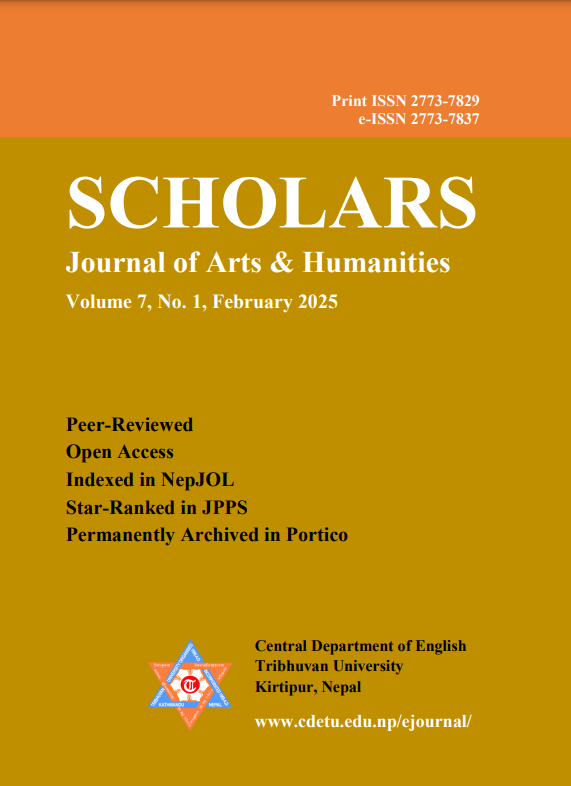The Macaronic Khyali: Shifting Contours of Limbu Indigenous Aesthetics
DOI:
https://doi.org/10.3126/sjah.v7i1.75673Keywords:
Borderland, code switching, mestiza consciousness, resistance, hybridity, contact zoneAbstract
This paper examines selected khyali (traditional performative art of Limbu) from the collection of Bakhat Angdembe and compositions of Swapnil Smriti and Munaraj Sherma in two major borderland contexts; the spontaneous embedding of Nepali and other codes into the paradigm of Limbu repertoire and the functioning of mestiza consciousness in the contact zone. Khyali, a unique four/five syllabic romantic folk song in yakthung pan (Limbu language) performed by young lash and lads, sets introductory inquiries to enhance the further course of yalang (paddy dance) and palam (song unison to yalang). However, macaronic shifts in its highly contextualized contemporary discourses epitomize the folk song as interstitial borderland text. The study addresses the primary questions of what factors contribute to the hybridization of khyali in contemporary contexts and what politics does its hybrid aesthetics promulgate in literary and social-political borders. Pertaining to these questions, the objectives of the study is to analyze resilience and resistance dynamics of Limbu contributing to the hybridity in contour; and to explore the politics of negotiation and re-signification of identity in literary and socio-political borders. To meet the objectives, the study applies theoretical insights of borderland studies specific to the concepts of third space, code switching/mixing and mestiza consciousness. Against the backdrop of this framework, the paper argues that hybridity chronicled in repartee results from the crisscrossed negotiation between Limbu ethnicity and counterpart cultures. The hybrid expressions and worldviews that khyali is filled with reflects the synthesizing power of Limbu people’s while wrestling against the dominant borders. The poetic expressions in khyali function as their agency of resilience, resistance, reinterpretation and adaptation and their ability to recover and reinvent their identity in the face of a shifting literary and socio-political context.
Downloads
Downloads
Published
How to Cite
Issue
Section
License

This work is licensed under a Creative Commons Attribution 4.0 International License.
© Central Department of English, Tribhuvan University and Authors




